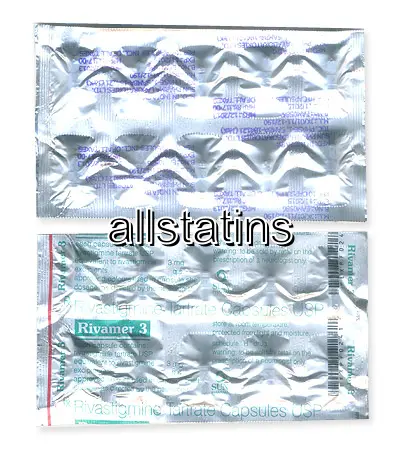| Package | Dosage | Price | Price per Dose | |
|---|---|---|---|---|
| Dosage: 1,5mg | ||||
| 360 pill | 1,5mg | AUD827.93 | AUD2.30 | |
| 240 pill | 1,5mg | AUD563.52 | AUD2.35 | |
| 180 pill | 1,5mg | AUD432.65 | AUD2.40 | |
| 120 pill | 1,5mg | AUD304.45 | AUD2.54 | |
| 90 pill | 1,5mg | AUD237.68 | AUD2.64 | |
| 60 pill | 1,5mg | AUD160.22 | AUD2.67 | |
| 30 pill | 1,5mg | AUD85.44 | AUD2.83 | |
| Dosage: 3mg | ||||
| 360 pill | 3mg | AUD758.49 | AUD2.11 | |
| 240 pill | 3mg | AUD531.47 | AUD2.22 | |
| 180 pill | 3mg | AUD413.95 | AUD2.30 | |
| 120 pill | 3mg | AUD299.11 | AUD2.48 | |
| 90 pill | 3mg | AUD237.68 | AUD2.64 | |
| 60 pill | 3mg | AUD173.58 | AUD2.88 | |
| 30 pill | 3mg | AUD98.79 | AUD3.29 | |

Rivastigmine Tartrate Description
Overview of Rivastigmine Tartrate
Rivastigmine Tartrate is a medication commonly prescribed for the management of dementia related to Alzheimer's disease and Parkinson's disease. It belongs to a class of drugs known as acetylcholinesterase inhibitors. Its primary function is to enhance cholinergic transmission in the brain, which is typically deficient in individuals suffering from these neurodegenerative conditions. This mechanism of action aims to slow cognitive decline and improve memory, reasoning, and daily functioning.
How It Works
The drug works by preventing the breakdown of acetylcholine, a neurotransmitter essential for memory and learning. Patients with dementia often have reduced levels of acetylcholine in the brain, which contributes to their cognitive symptoms. By inhibiting the enzyme responsible for its degradation, Rivastigmine Tartrate helps to increase the availability of acetylcholine at nerve synapses, thereby supporting neural communication. This increase can translate into noticeable improvements or stabilization of some cognitive functions in many patients.
Usage and Dosage
Rivastigmine Tartrate is usually available in capsule form, as a transdermal patch, or in liquid solution. The dosing regimen depends on the patient's condition, age, and response to treatment. Typically, treatment begins with a low dose to minimize side effects and gradually increases over time. It is important to follow the healthcare provider’s instructions carefully and not to adjust the dosage without medical advice. Consistency in administration is crucial for optimal results. It often requires several weeks before significant benefits are observed.
Potential Benefits
Many users report improvements in memory, attention, and the ability to perform daily activities. The medication can help slow the progression of cognitive decline, allowing patients to maintain independence longer. Additionally, some individuals experience a reduction in behavioral symptoms such as agitation and irritability. It is important to understand that Rivastigmine does not cure dementia but can significantly enhance quality of life by addressing some of its core symptoms.
Possible Side Effects
Like all medications, Rivastigmine Tartrate may cause side effects. Common issues include nausea, vomiting, diarrhea, dizziness, and loss of appetite. Some patients may experience weight loss or gastrointestinal discomfort initially. Skin irritation can occur at the site of the transdermal patch. Serious side effects are less common but may include cardiac issues, such as slow heart rate or fainting. Patients should report any adverse reactions to their healthcare provider promptly to adjust treatment if necessary.
Patient Considerations
It is essential for patients to inform their doctor about their full medical history before starting Rivastigmine. Caution should be exercised in individuals with heart problems, gastrointestinal disorders, or those taking other medications that might interact. Regular monitoring and follow-up appointments help ensure the medication's safety and effectiveness. Since the medication can have CNS effects, caution is advised when driving or operating machinery until the patient understands how it affects them personally.
Conclusion
Rivastigmine Tartrate remains a valuable option for managing symptoms associated with dementia. It offers a potential to enhance cognitive function, improve daily living, and support the overall well-being of patients. Nonetheless, it requires careful management to minimize side effects and maximize benefits. Patients and caregivers should maintain open communication with healthcare providers to tailor treatment plans to individual needs and responses.